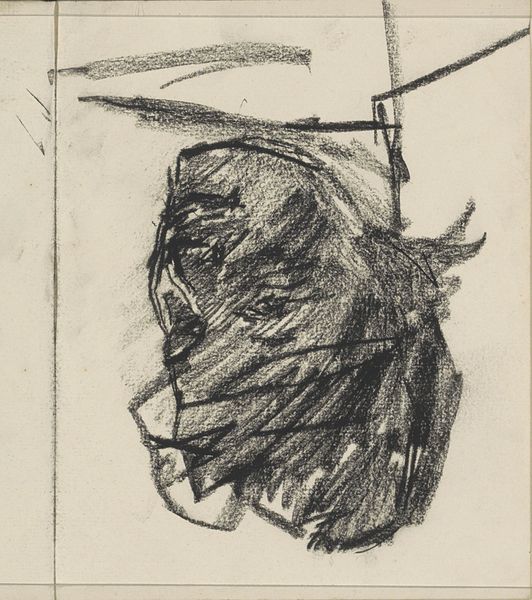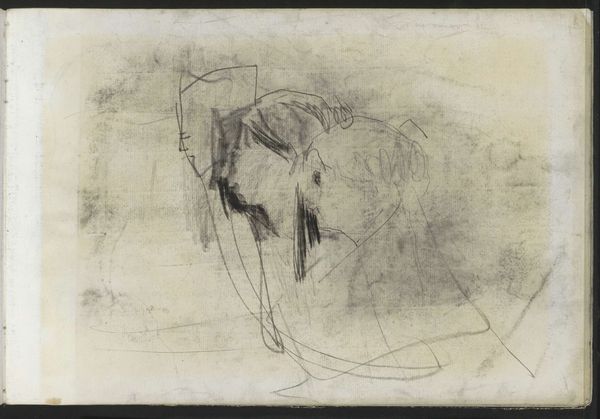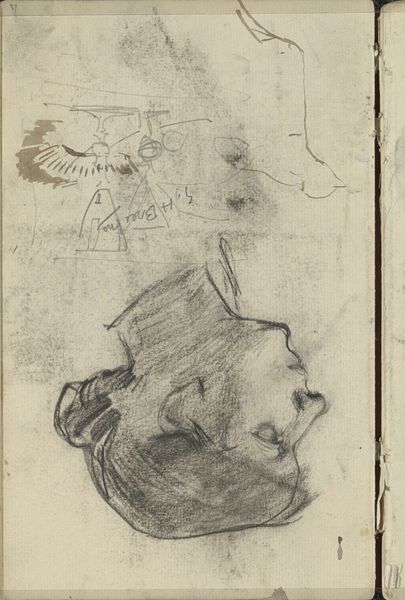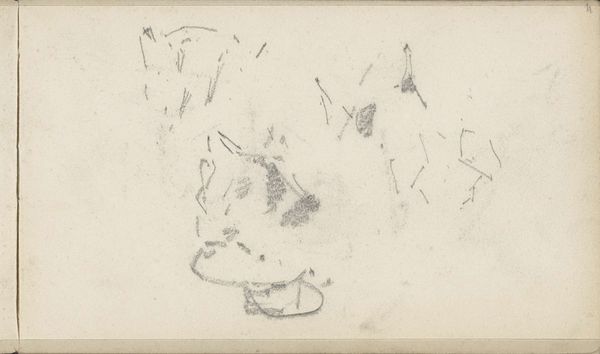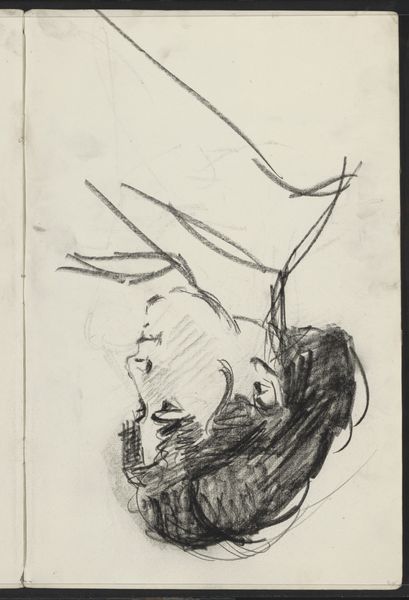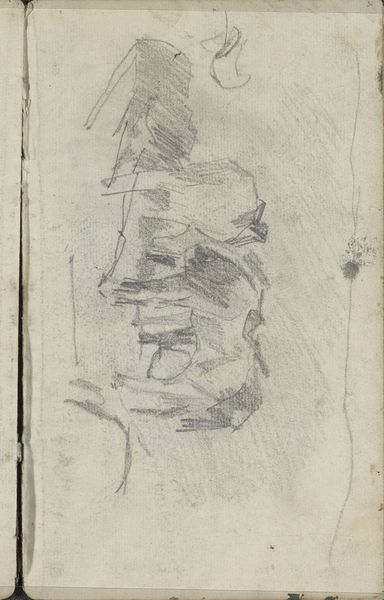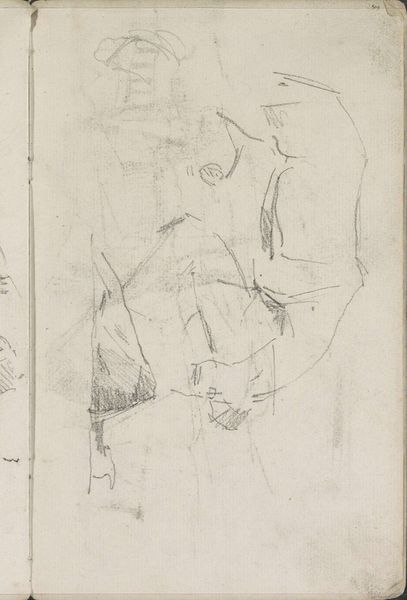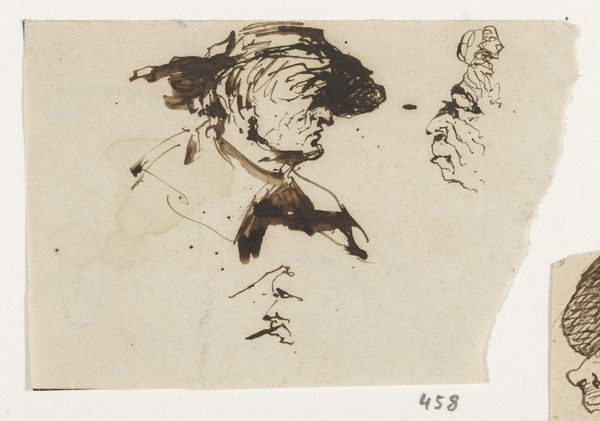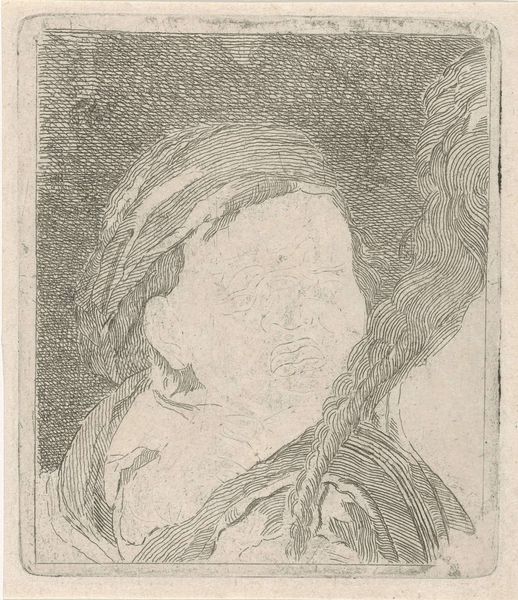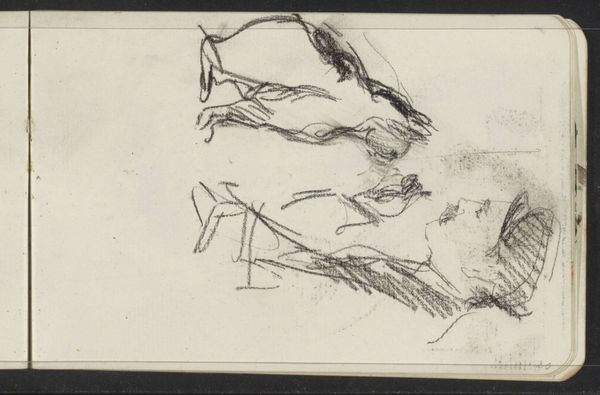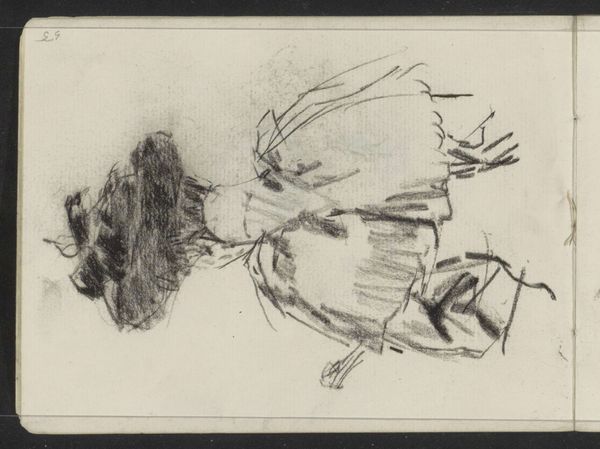
drawing, paper, graphite
#
portrait
#
drawing
#
pencil sketch
#
paper
#
graphite
#
academic-art
Dimensions: height 165 mm, width 235 mm
Copyright: Rijks Museum: Open Domain
Editor: Here we have Gerrit Willem Dijsselhof's "Rotspartij in een aquarium", which roughly translates to "Rocks in an aquarium", done sometime between 1876 and 1924, rendered in graphite and pencil on paper. It's quite shadowy, a collection of undefined forms that only begin to take shape as I look closer. How do you interpret this work? Curator: I see a powerful study in the material conditions of image making. The graphite itself, the type of pencil used, the tooth of the paper—all of these factors dictate the density and texture we see. Note how the artist coaxes form out of essentially very limited means. Editor: That's interesting, focusing on the tools themselves. I was thinking about what it might depict. Curator: Precisely! What's depicted is secondary to *how* it is depicted. Consider the socio-economic implications; paper and graphite were relatively accessible materials. This wasn’t a commissioned portrait demanding costly oils and precious pigments. Dijsselhof deliberately selected humbler media. Editor: So, by using these readily available materials, he's democratizing art, in a way? Making art accessible, not just in subject matter, but in creation? Curator: Exactly! The act of drawing, the accessibility of the medium – it democratizes not just viewing but also the possibility of creation. What might this imply about the role of the artist, and the value we place on art objects themselves? Are we privileging the final “artwork” over the labor and materiality that produce it? Editor: I hadn’t thought about the implications of his material choices that way. It makes me consider the drawing as a record of a specific action using a particular kind of labor and set of available resources, which provides an important social context. Thank you. Curator: And thank you. Paying attention to the tangible realities of art production—that's where true understanding begins.
Comments
No comments
Be the first to comment and join the conversation on the ultimate creative platform.
